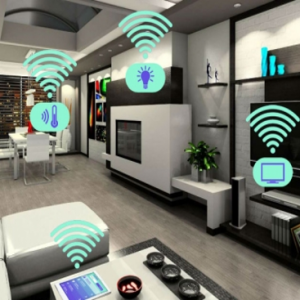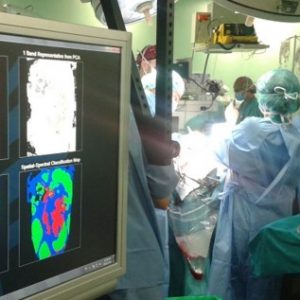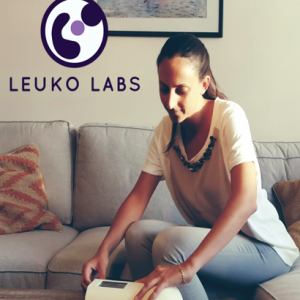Brief description of the solution and the added value it delivers
Haptic Skin is a textile that allows any garment to be manufactured as a peripheral device for video games, enabling users to feel the same as their characters in the virtual environment: heat when approaching a fire, rain, the shock wave of an explosion, etc.
Decades of experience in human interactive interfaces and two years spent developing technologies of this kind have made it possible to achieve a high degree of realism in the sensations that the user is able to perceive. Garments made using this textile greatly improve users’ immersion in the virtual environment with which they are interacting. Haptic Skin also has numerous applications in markets as varied as health, sport and the internet.
Description of the technological basis
Haptic Skin is textile from which any garment can be made. The textile contains a series of devices that generate tactile stimuli in the garment’s wearer: impact, contact, friction, temperature and many more.
Garments made using Haptic Skin boost the immersion and realism experienced by users interacting with a virtual reality environment.
Haptic Skin is, to date, a unique product that combines a large number of tactile technologies to enhance the perception of virtual sensations through skin receptors (vibration, pressure, temperature, etc.).
‘Any garment can be made using Haptic Skin, making it possible to feel a simulated environment through the skin on any part of the body, perceiving the virtual experience in a completely realistic way’
Business needs / application
ICT applied to digital content
-
Demand for improved gaming experiences, reaching as realistic heights as possible.
-
Demand for virtual reality devices that enhance the tactile sensations that users perceive when playing, encompassing the whole body.
-
Video game companies’ need for differentiation to gain market share.
-
Many virtual reality substitutes have been launched onto the market in recent years.
-
The major video game companies have started to incorporate virtual reality devices, such as virtual reality headsets, into their developments.
-
Increase in the use of augmented reality in video games, which requires tactile interaction in order to offer greater realism.
‘Virtual reality is an emerging market with huge growth potential in the coming years. Haptic Skin uses the sense of touch to achieve complete immersion in virtual environments’
Competitive advantages
-
Generation of real tactile sensations.
-
Great variety of sensations compared to other similar devices: temperature, pressure, impact, electrostimulation, etc.
-
Price at least 25% lower than the competition’s.
-
It can be used to make any garment or clothing accessory.
-
It does not require external equipment (wireless, lightweight).
-
Scalability: capable of extrapolation to other markets as diverse as medicine, leisure, security, sport, etc.
References
-
Solution funded and developed for the European project AUGGMED: interactive virtual reality vest for training state security forces and emergency services.
-
Highly qualified team, with international contacts and decades of experience.
-
Validation testing with end users.
Stage of development
-
Concept
-
Research
-
Lab prototype
-
Industrial prototype
-
Production
Contact
Haptic Skin contact
Gonzalo García, Jose Breñosa, Manuel Ferre
e:
e:
UPM contact
Innovation and Entrepreneurship Programmes
Technological Innovation Support Centre (CAIT) – UPM
e:














